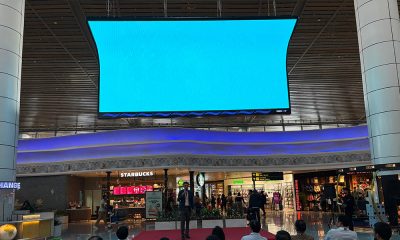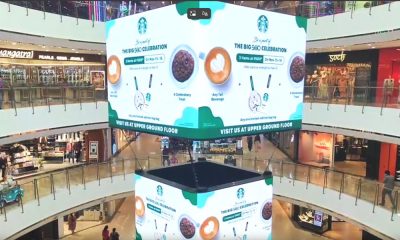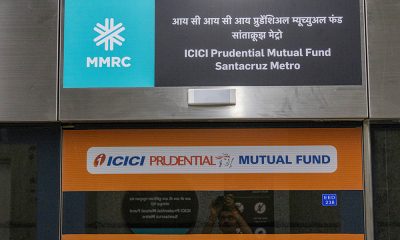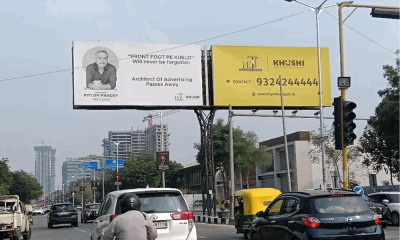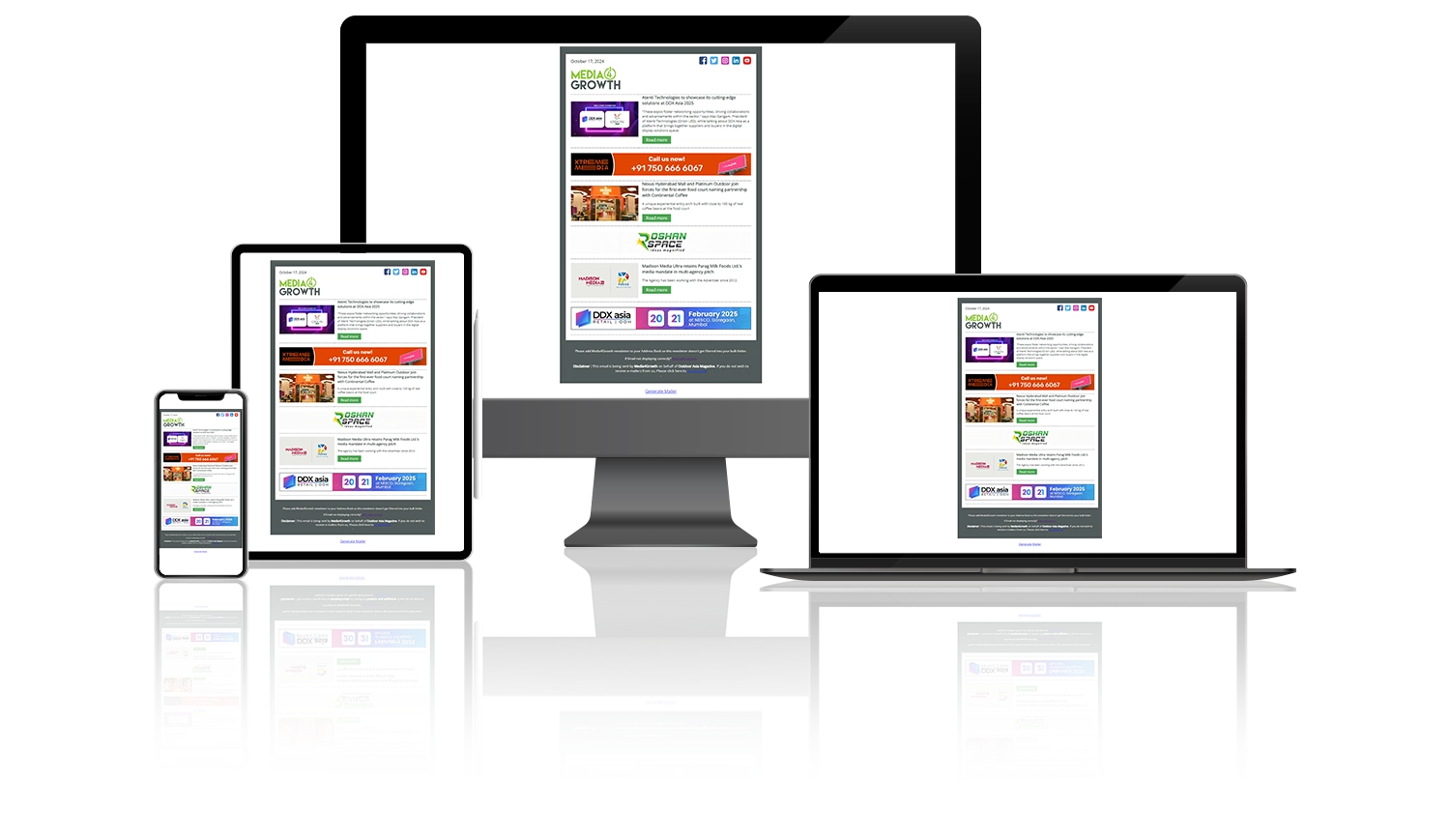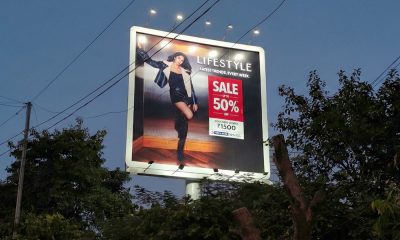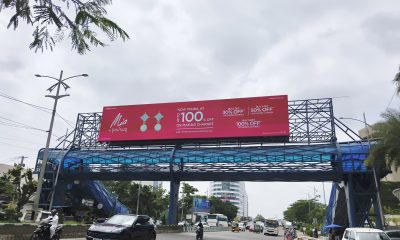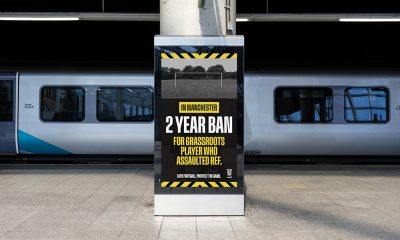Industry News
Airport media: Wings of change
Increasing domestic and international passenger traffic, modernisation of airport infrastructure, rise of Tier 2 cities as new growth centres, and promotion of the UDAN scheme have all contributed to the creation and strengthening of an airport media ecosystem in India that is destined to deliver great dividends to all the participating stakeholders.
While several businesses suffered the tremors of the pandemic, certain industries such as the aviation sector got the worst of it. But, with the COVID-era fairly behind us, people have learnt to appreciate travel, especially air travel a lot more now. As per the Airport Authority of India (AAI), the air passenger volume (domestic and international) jumped from 24.34 million in April 2022 to 30.56 million in April 2023 – that’s an impressive 25.5% growth in just a year. Moreover, Bengaluru and Delhi airports were ranked 2nd and 7th respectively among the world’s 10 best performing airports in a ranking released by Cirium in January this year.
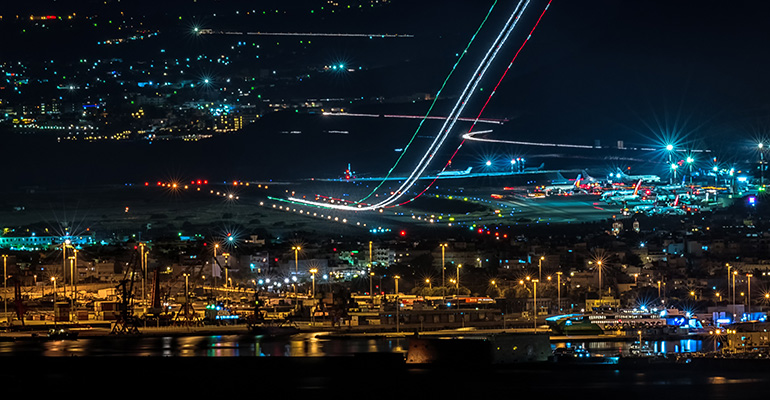
India is a young nation, about 40% of its population is below the age of 25, and as this generation of young adults gains financial independence, it brings them one step closer to more disposable income to be used for leisure and travel.
The air passenger travel growth brings about a new dawn for the transit OOH media, and brands and media owners alike have jumped on the bandwagon. With increasing passenger volume, new infrastructure, and ever-evolving ad technologies, the possibilities for advertisers and media owners in the airport space is sky high.
Winds of Change
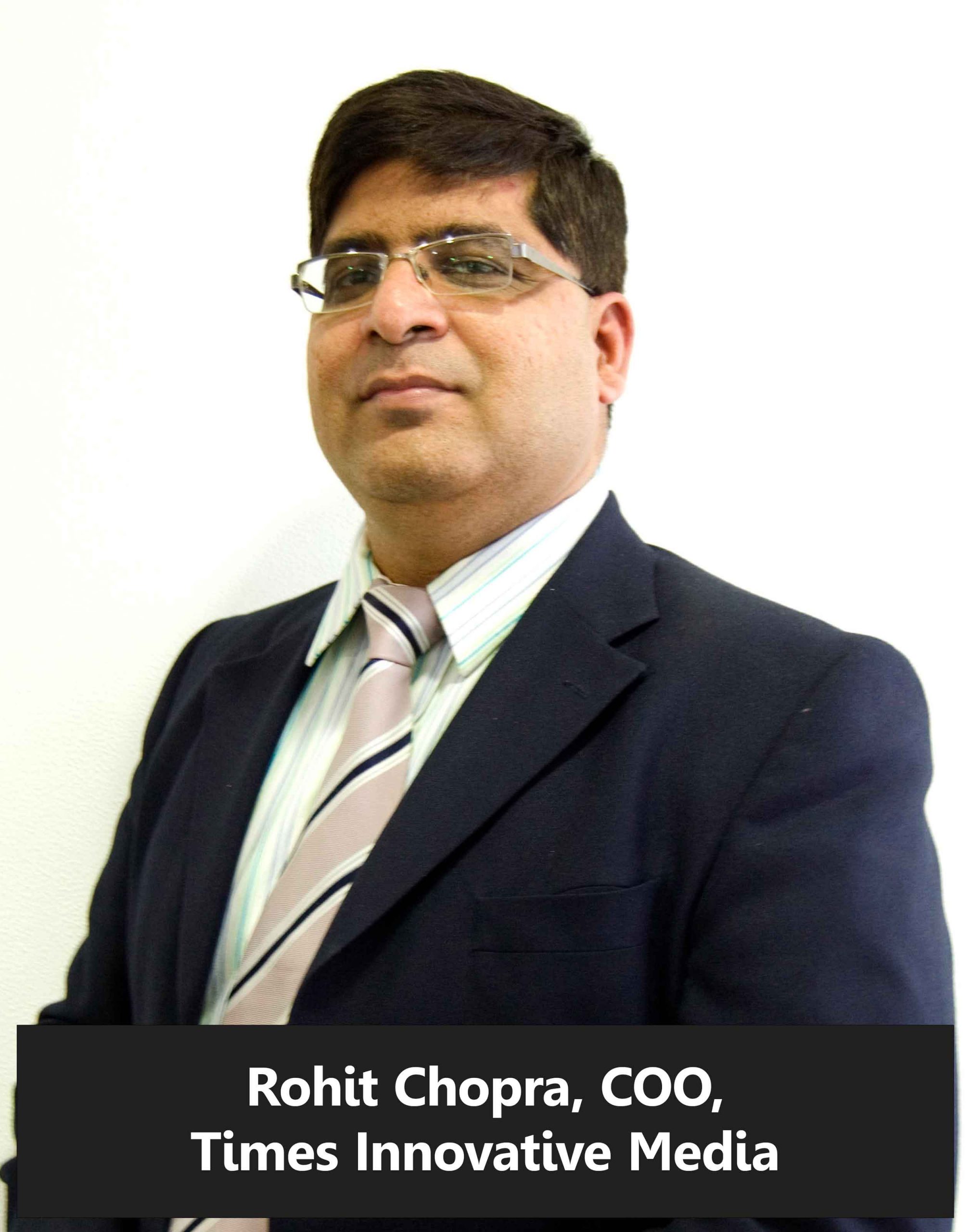
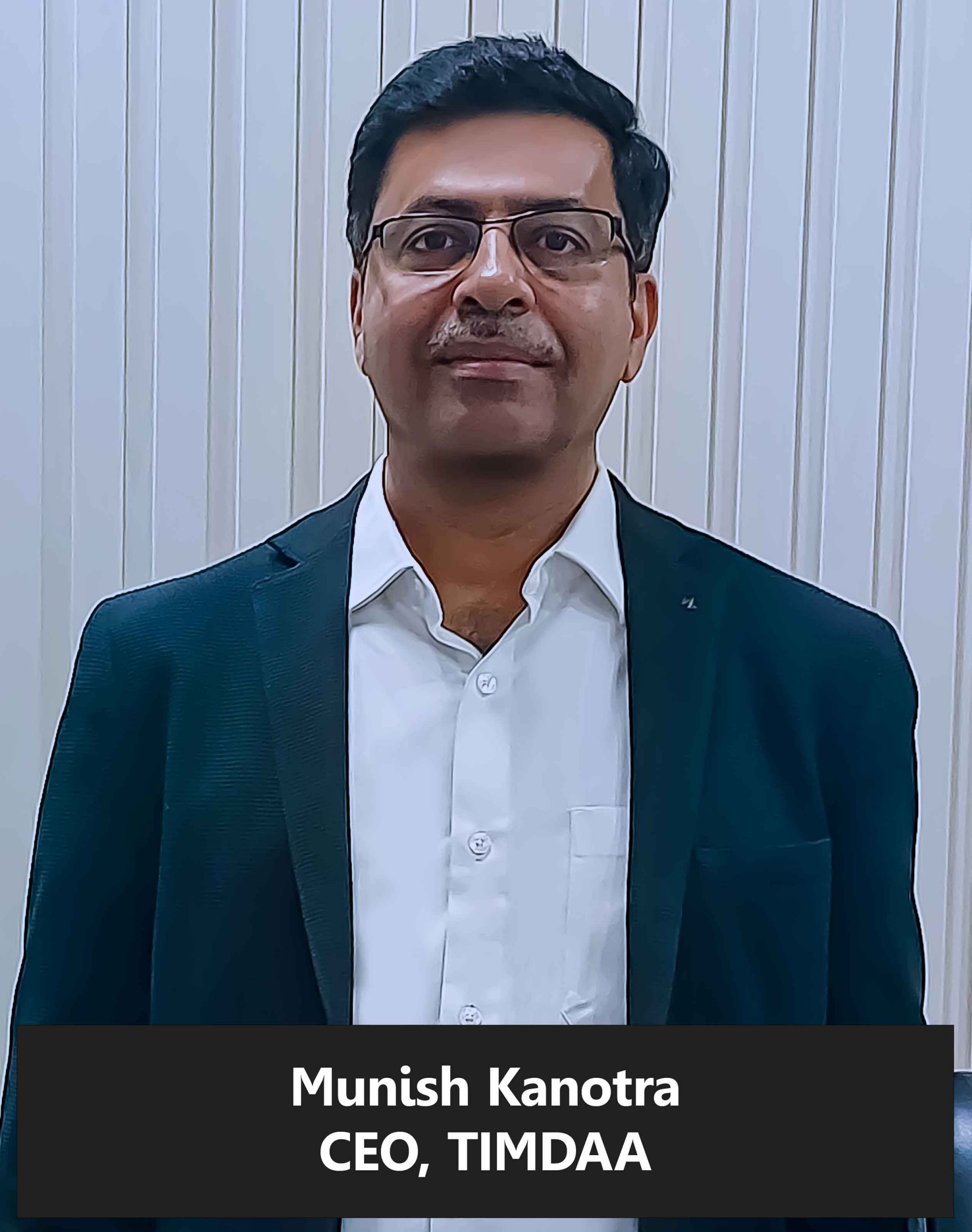 Media owners are optimistic of the times to come, and this optimism is partially fueled by the brands’ sentiments towards airport advertising. A major factor that has contributed towards the increased exposure that brands are experiencing at airports is longer dwell times.
Media owners are optimistic of the times to come, and this optimism is partially fueled by the brands’ sentiments towards airport advertising. A major factor that has contributed towards the increased exposure that brands are experiencing at airports is longer dwell times.
As most flights now require passengers to check in at least 2-3 hours before departure, they spend more time at the airport than before. Rohit Chopra, Chief Operating Officer, Times Innovative Media (Times OOH) says, “Our research points to a significant increase in the dwell time at the airports. For example, at domestic departures, we have noticed people are coming about 132 minutes before their flight departures. This is a significantly higher dwell time than 70-75 minutes which was the norm during pre-COVID times. This gives brands a much richer platform for advertising and brand engagement opportunities”.
These cultural changes have helped shape the business practices of many brands and their perception of airport advertising. Munish Kanotra, Chief Executive Officer, Times Delhi Airport says, “Brands understand the value of advertising at the airport due to the premium eyeballs that they attract. Delhi airport is now clocking more than 5.5 million footfalls a month – possibly the largest gathering of high-disposable income potential customers anywhere in India. Hence, it makes perfect sense for brands to include airports in their media plan”.
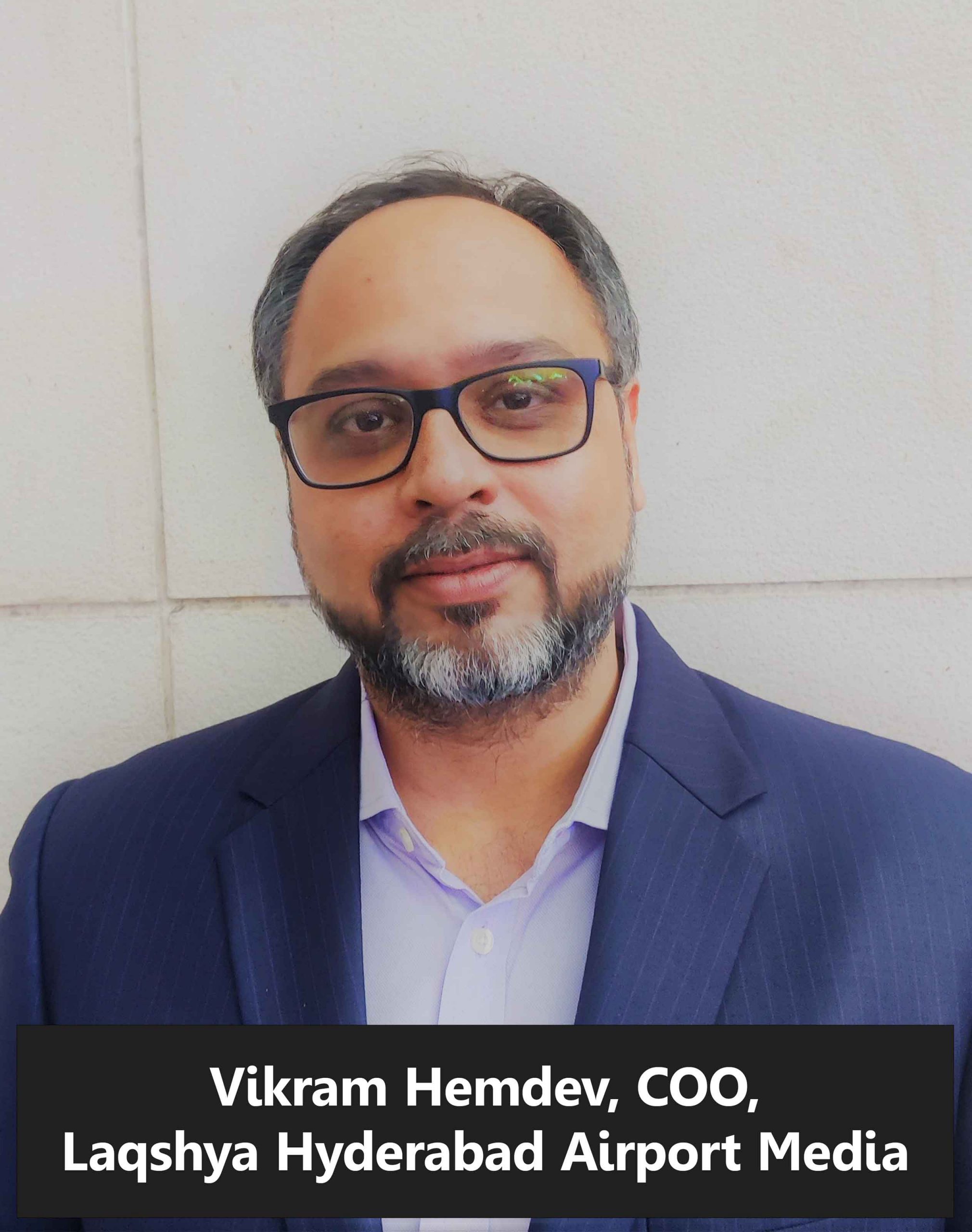 Vikram Hemdev, COO, Laqshya Hyderabad Airport Media believes that while brands are responding well to the increase in passenger volumes, they did so even before the pandemic. The real change has been the perception of the concept of travel itself, “The pandemic impacted our entire perspective towards travelling. It gave rise to concepts like Revenge Travel/Tourism, Work-ations, Work From Home & Remote Working Models, Fear Of Missing Out (FOMO). So today, a working professional based in Hyderabad could be sitting by the poolside of a resort in Srinagar and working and that is now considered ‘normal’. Which means travelling today is no longer only business leisure, it can be both! And in most of these cases, the preferred mode of travel is via flights”.
Vikram Hemdev, COO, Laqshya Hyderabad Airport Media believes that while brands are responding well to the increase in passenger volumes, they did so even before the pandemic. The real change has been the perception of the concept of travel itself, “The pandemic impacted our entire perspective towards travelling. It gave rise to concepts like Revenge Travel/Tourism, Work-ations, Work From Home & Remote Working Models, Fear Of Missing Out (FOMO). So today, a working professional based in Hyderabad could be sitting by the poolside of a resort in Srinagar and working and that is now considered ‘normal’. Which means travelling today is no longer only business leisure, it can be both! And in most of these cases, the preferred mode of travel is via flights”.
It could be argued what makes airports so unique is that it sees a new target audience every day, and the concept of ‘returning customers’ is nearly not there. Hence, the question that needs answering is whether long-term advertising at 
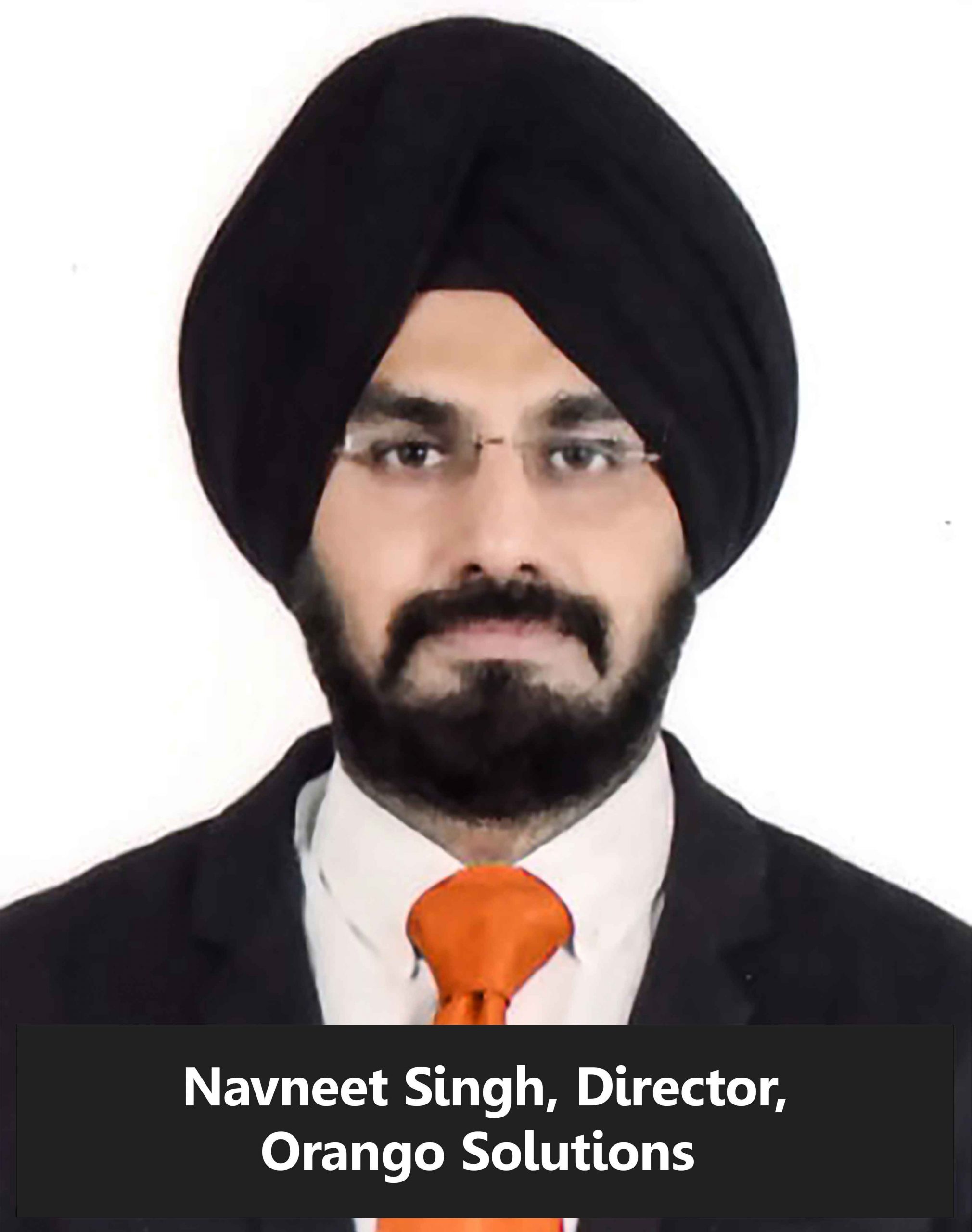 the airport is lucrative for brands, and if so what formats appeal to them? Vishnu Telang, CEO, Khushi Advertising Ideas says, “More than 40% of all advertisers desire long-term exposure. Brand activations are very effective, as evidenced by the fact that kiosks selling credit cards, cosmetics, and fashionwear profit the most from experiential marketing that attracts many time-pressed travellers”.
the airport is lucrative for brands, and if so what formats appeal to them? Vishnu Telang, CEO, Khushi Advertising Ideas says, “More than 40% of all advertisers desire long-term exposure. Brand activations are very effective, as evidenced by the fact that kiosks selling credit cards, cosmetics, and fashionwear profit the most from experiential marketing that attracts many time-pressed travellers”.
Adding to that, Navneet Singh, Director, Orango Solutions says, “Brands always prefer long-term advertising. Anything that is innovative is always welcome and how well you present it also makes a difference because mundane ideas are not appealing”.
Rohit Chopra says that airports provide brands with a unique environment to engage with their customers, “Airports are not just a point of departure or arrival, but also a platform for brands to engage with travellers and create memorable experiences. Brand engagement at Indian airports is important as our airports are a high-traffic environment offering a very niche and captive audience of travellers. Activations helps brands to connect with consumers, and drive business growth”.
Taking off into Digital Age
While digital marketing is still the preferred method of advertising for many brands, OOH is steadily making a comeback providing brands with larger-than-life opportunities to make an impression in the audience’s mind. This has led to brands to rethink their advertising strategies and the rise of DOOH has brands leaning towards outdoor advertising as it not only provides a more dynamic and interactive ad viewing experience to the audience but also programmatic DOOH (pDOOH) gives brands the opportunity to automate their ad placements and reach the relevant audiences efficiently.
And airports also provide an environment for brands to showcase their products in an immersive and interactive manner, and the results speak for themselves. Speaking on the matter, Rohit Chopra says, “In the last one year we have seen many new advertisers and categories embracing digital advertising across our platforms. Almost all our screens are now integrated with the programmatic world, and we are beginning to see traction in revenues as well. We are now focused on deploying more large network screens. Delhi and Kolkata airports now have a strong video wall network which is not only creating a ‘wow’ effect for the brands but also making the airport environment look vibrant”.
 Speaking about the DOOH changes at the Bengaluru airport, Raheel Amjad, Deputy Managing Director, JCDecaux, says, “JCDecaux will deploy a range of new services and innovative technologies such as AAM (Airport Audience Measurement, the first international audience system for the airport industry) as well as programmatic sales. This will enable advertisers to blend the precision targeting and flexibility of programmatic buying with the effectiveness of DOOH”.
Speaking about the DOOH changes at the Bengaluru airport, Raheel Amjad, Deputy Managing Director, JCDecaux, says, “JCDecaux will deploy a range of new services and innovative technologies such as AAM (Airport Audience Measurement, the first international audience system for the airport industry) as well as programmatic sales. This will enable advertisers to blend the precision targeting and flexibility of programmatic buying with the effectiveness of DOOH”.
When talking about developments at the Delhi airport, Munish Kanotra says, “We have invested heavily in creating world-class digital media and in terms of value, almost 50% of the campaigns are on digital media. We recognised that dwell time is highest at boarding gates and the baggage claim area. As a result, we have installed 24-VideoWalls Digital Arcade at the boarding gates and 36-VideoWalls DigiCast Gallery near the baggage claim belts. These have now become Delhi airport’s flagship digital media assets and are also the most preferred ones by brands”.
DOOH provides advertisers as well as media owners with numerous opportunities. Reflecting on this sentiment, Vishnu Telang comments, “DOOH is the way of the future. Many airports will soon have more than 60% DOOH because it allows marketers to use moving visuals, multiple displays of the same product, and compelling stories. We have invested in cutting-edge inventories and have upgraded to the best and most recent technology available worldwide. Our strategic blend of static, DOOH, hoardings, showcases, and dropdown media complements and enhances the ambience and aesthetics”.
From India to the World
With a country as vast and as diverse as India, there is a growing population that is steadily moving up social classes and is slowly able to afford previously unattainable luxuries such as air travel. This is further accelerated by government schemes such as UDAN – an acronym for ‘Ude Desh ka Aam Nagrik’.
With UDAN, the government aims to improve regional connectivity which helps improve passenger traffic in non-metro airports. And this stands to be a golden opportunity for advertisers. Speaking on the subject, Vishnu Telang says, “The UDAN initiative has resulted in a significant rise in airport penetration. Occupancy is nearing capacity, and first-time flyers are quickly becoming frequent flyers. We are optimistic about non-metro routes because they are experiencing exponential and untapped development. At these airports, leisure travellers are just as visible as business visitors. The same-day return practice is also starting to gain traction”.
Rohit Chopra shared similar sentiments: “Non-metro airports are the future of new India. Both domestic and international travel connecting tier 2 airports is on the rise. In fact, international flights from Tier 2 cities have fuelled the outbound traffic numbers. We have seen very high adoption of digital media by brands in tier 2 city airports. Some of the AAI airports still have catching up to do in terms of offering flexibility for media deployment”.
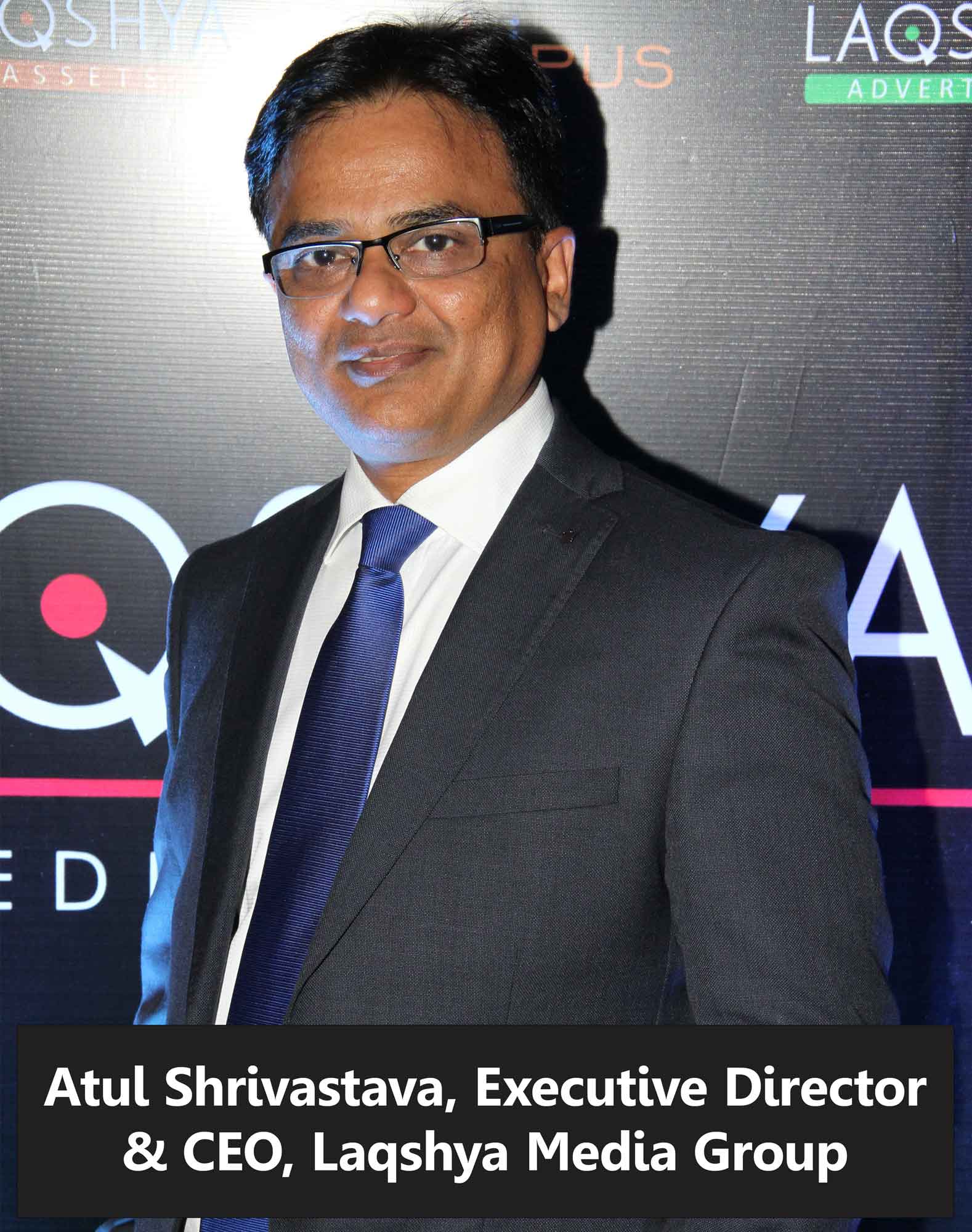 While the future of non-metro airports is promising, the processes followed by the AAI may act as a hiccup. Atul Shrivastava, Executive Director & CEO, Laqshya Media Group, says, “There is a good opportunity in non-metro cities. The only issue with AAI airports is their tender terms, which are not business friendly but rather aimed at controlling the business of the concessionaire. They may have had an unpleasant experience in the past which has led them to come up with such ‘unfriendly’ terms in the tender that no serious and long-term player is able to participate in. It should be noted that private non-metro airports are doing good business and the AAI should seriously consider non-airline business seriously in the future.
While the future of non-metro airports is promising, the processes followed by the AAI may act as a hiccup. Atul Shrivastava, Executive Director & CEO, Laqshya Media Group, says, “There is a good opportunity in non-metro cities. The only issue with AAI airports is their tender terms, which are not business friendly but rather aimed at controlling the business of the concessionaire. They may have had an unpleasant experience in the past which has led them to come up with such ‘unfriendly’ terms in the tender that no serious and long-term player is able to participate in. It should be noted that private non-metro airports are doing good business and the AAI should seriously consider non-airline business seriously in the future.
With 159 airports operational in India, the government aims to improve regional connectivity with schemes such as UDAN and bring the tally up to 220 by 2026. With a sizeable passenger traffic, there is no shortage of advertising potential for brands in India, and with constant innovation in the OOH space, there is ample supply of resources for brands to utilise for their campaigns. While those within the industry are familiar with the changes and perhaps even excited for the future, it is important for the brands to have a similar sense of demand for OOH advertising. And as a larger percentage of the country’s population is able to afford air travel, it helps accelerate not only the aviation industry but also the airport OOH segment – which is perhaps the boost that brands need to rejuvenate their confidence in the OOH medium. The possibilities are endless and the future of airport transit media seems bright for now.

